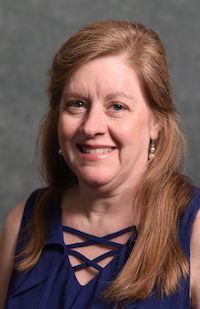Don't Forget to Assess the Family Caregiver of Your Older Adult Patient
Unlike assessments of pediatric patients, healthcare providers do not routinely include the family members or friends in the assessment of older adults—but they should.

Pamela C. Spigelmyer, PhD,
RN, CNS, BSN
Healthcare providers are trained extensively in the assessment of patients who present to the healthcare system. In many instances when older adults present for care, a family member or friend accompanies the older adult. However, busy schedules and multiple responsibilities compete with healthcare providers’ time during an assessment.
Unlike assessments of pediatric patients, healthcare providers do not routinely include the family members or friends in the assessment of older adults. This omission should be of concern as the number of “baby boomers” advancing into older age increases and their need for caregiving assistance also increases. Family caregivers can be an invaluable source of information for healthcare providers as they plan care for the older adult. Therefore, family caregivers’ well-being should also be assessed by healthcare providers during the older adult healthcare visit to ensure family caregivers are able to sustain their caregiving role.
Informal or family caregivers are defined as unpaid persons who may be related to the individual in need of care—or they could be a neighbor or friend—and who provide assistance in the form of activities of daily living or assisting with medical tasks.1 Currently in the United States there are an estimated 34.2 million caregivers who provide unpaid care for someone age 50 or older.1 These informal caregivers are also referred to as co-providers of care as they often provide care once performed by nurses before the healthcare shift toward community-based care.2,3 Financially, informal or family caregivers provide an estimated $470 billion in unpaid care saving the US healthcare system these caregiving costs.1
Providing care for someone has both pros and cons associated with it. Although family caregivers have expressed increased personal growth and intimacy with their care recipient and a sense of meaning during the caregiving encounters, they also report experiencing increased depression, mood disturbances, and emotional distress, as well as anxiety, physical exhaustion, and overall decreased quality of life.4 These negative costs take their toll on informal caregivers’ health over time and limit the amount of care they are able to provide.
Healthcare providers who are aware of these factors are in a position to help buffer informal caregivers against adverse outcomes.4 The nurse is usually the first person to interact with the older adult and their caregiver within the healthcare system. As such, nurses can use the nursing process to assess informal family caregivers when they present to the care facility or during a home visit with the care recipient. The assessment data collected will help to identify at-risk caregivers and opportunities to support them.5
Assessment of family caregivers should focus on the caregiver’s need to provide the care as well as their ability to provide care.4,6 This includes the meaning the family caregiver assigns to caring for the care recipient, the risk for poor caregiver outcomes, and the need for referral or caregiver assistance.3 The healthcare provider assessing the informal caregiver would also assess the relationship between the caregiver and care recipient.7 The nature of the caregiving relationship can be determined by asking questions such as: Do you take an active role in the relationship or do you consider yourself a bystander? How do you view the person you are caring for? What images of caregiving come to mind when you are providing care? In addition, there are many assessment tools that health care providers can use to assess family caregivers.8
Once the assessment is performed, areas of opportunity or deficiency can be identified, and the nurse or healthcare provider can move toward finding an intervention. Examples of potential interventions include nurses offering informal caregivers support via education and counseling, offering potential respite opportunities, mobilizing other family members to help with caregiving, role modeling caregiving for the caregiver, and fostering the idea that the family caregiver is not alone.4,3,7 Ideally, healthcare providers who understand and value family caregivers as both co-providers of care and co-recipients of care2 will not forget to assess informal family caregivers when they present with their care recipient into the healthcare system.
Available assessment resources8 include:
- American Medical Association’s Caregiver Self-Assessment Questionnaire
- Modified Caregiver Strain Index available from the Hartford Institute for Geriatric Nursing
- Family Preference Index (How To Try This series)
- The United Hospital Fund’s Next Step in Care guides
Editor's Note: This is a column by Pamela C. Spigelmyer, PhD, RN, CNS, BSN. She is an assistant professor of nursing at Duquesne University in Pittsburgh, PA. The piece reflects her views, not necessarily those of the publication.
Health care professionals and researchers interested in responding to this piece or similarly contributing to MD Magazine® can reach the editorial staff by submitting a request here.
References
- Family Caregiver Alliance. Caregiver statistics: demographics https://www.caregiver.org/print/23216?rel=0" ; 2016 Accessed 1 November 2018.
- McGhan, G., Loeb, S., Baney, B., & Penrod, J. End-of-life caregiving. Journal of Gerontological Nursing. 2013; 396: 45-54.
- Schumacher, K., Beck, C., & Marren, J. Family caregivers caring for older adults, working with their families. American Journal of Nursing. 2006; 106:40-49.
- Naef, R., Hediger, H., Imhof, L., & Mahrer-Imhof, R. Variances in family carers’ quality of life based on selected relationship and caregiving indicators: A qualitative secondary analysis. International Journal of Older People Nursing. 2016; doi. 10.1111/opn.12138.
- Qualey, T. Assessing the patient’s caregiver. Nursing Management. 1997; 28: 43-44.
- Biggs, A. Family caregiver versus nursing assessments of elderly self-care activities. Journal of Gerontological Nursing. 1990; 16: 11-16.
- Phillips, L. Elder-family caregiver relationships. Nursing Clinics of Northern America. 1989; 24: 795-807.
- Levin, C. The hospital nurse’s assessment of family caregiver needs. American Journal of Nursing. 2011; 111: 47-51.